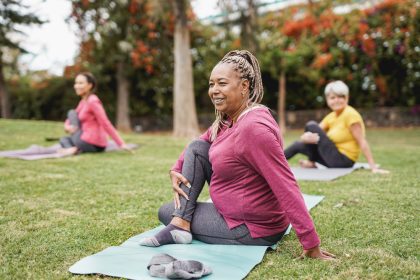The secret to maintaining exceptional heart health after 50 may not lie in expensive equipment or complicated workout routines. Instead, the answer could be as simple as paying attention to your body’s internal clock. Understanding when your cardiovascular system functions at its peak can revolutionize your approach to fitness and aging.
Your body operates on a sophisticated 24-hour cycle that influences everything from hormone production to muscle recovery. This internal rhythm, combined with age-related changes in metabolism and cardiovascular function, creates unique opportunities to maximize exercise benefits through strategic timing. The key lies in working with your body’s natural patterns rather than against them.
Many adults over 50 struggle with declining energy levels, reduced cardiovascular efficiency, and slower recovery times. However, these challenges can be addressed more effectively by aligning physical activity with the body’s optimal performance windows. This approach transforms exercise from a daily battle into a harmonious partnership with your biological systems.
1. Morning workouts supercharge your cardiovascular system
Starting your day with physical activity creates a cascade of cardiovascular benefits that extend throughout the entire day. Your heart and lungs operate differently during morning hours, offering unique advantages that can significantly improve your overall fitness levels and long-term health outcomes.
During the early morning hours, your body temperature is naturally lower, which reduces the strain on your cardiovascular system during exercise. This temperature advantage allows your heart to pump blood more efficiently without the added stress of cooling your body, enabling longer and more effective workout sessions.
Your body’s stress hormone levels follow a natural pattern that peaks in the early morning, providing energy and alertness for physical activity. This hormonal surge creates an ideal environment for cardiovascular exercise, enhancing your ability to sustain higher intensities while improving overall heart function over time.
Blood circulation patterns also favor morning exercise sessions. Your blood vessels are more responsive during these hours, allowing for better oxygen delivery to your muscles and more efficient removal of metabolic waste products. This enhanced circulation supports both immediate performance and long-term cardiovascular health.
The psychological benefits of morning exercise contribute significantly to heart health through stress reduction and mood enhancement. Starting your day with physical activity establishes a positive mindset that reduces stress hormones throughout the day, protecting your cardiovascular system from the damaging effects of chronic stress.
2. Consistent daily timing creates powerful health adaptations
Maintaining the same exercise schedule every day triggers remarkable adaptations in your cardiovascular system that amplify the benefits of physical activity. Your body thrives on predictability, and consistent timing allows your heart, lungs, and muscles to prepare for and optimize their performance during exercise sessions.
Your internal clock learns to anticipate physical activity when it occurs at the same time daily. This anticipation triggers preparatory changes in heart rate, blood pressure, and breathing patterns that enhance exercise performance while reducing the stress on your cardiovascular system. The preparation process becomes more efficient over time, leading to greater fitness gains.
Metabolic processes align with consistent exercise timing, optimizing fuel utilization and energy production. Your body learns to mobilize energy stores more efficiently at specific times, supporting longer and more intense exercise sessions while improving overall metabolic health. This metabolic synchronization becomes increasingly important as metabolism naturally slows with age.
Recovery mechanisms also adapt to regular timing patterns, initiating repair processes at predictable intervals. This synchronized recovery leads to faster healing, reduced muscle soreness, and greater improvements in cardiovascular fitness. The enhanced recovery capacity helps maintain exercise consistency, which is crucial for long-term health benefits.
Sleep quality improves dramatically when exercise occurs at consistent times daily. Regular physical activity timing helps regulate your sleep-wake cycle, leading to deeper, more restorative sleep that supports cardiovascular recovery and overall health maintenance. Quality sleep becomes increasingly vital for aging adults’ well-being.
3. Earlier peak activity delivers superior health outcomes
Concentrating your most vigorous physical activities during the earlier portions of the day appears to provide significant advantages for cardiovascular and overall health. This timing strategy aligns with natural biological rhythms that support maximum physical performance and recovery.
Your oxygen utilization capacity peaks during earlier hours of the day, allowing for more efficient cardiovascular exercise. This enhanced oxygen processing ability enables you to sustain higher exercise intensities with less perceived effort, leading to greater fitness improvements and better long-term health outcomes.
Walking efficiency and endurance improve when vigorous activities occur earlier in the day. Your cardiovascular system operates more smoothly during these hours, enabling greater distances and speeds with reduced fatigue. This efficiency becomes particularly valuable for maintaining mobility and independence as you age.
Blood pressure regulation benefits significantly from earlier peak activity timing. Physical activity during morning or early afternoon hours helps establish healthy blood pressure patterns that persist throughout the day. This timing advantage provides important protection against age-related cardiovascular changes and reduces disease risk.
Energy levels remain more stable throughout the day when peak activities occur earlier. This sustained energy supports continued physical activity and reduces the afternoon fatigue that often leads to sedentary behavior. Maintaining higher activity levels throughout the day compounds the cardiovascular benefits of structured exercise sessions.
4. Regular activity rhythms protect against chronic diseases
Establishing predictable daily activity patterns creates powerful protective effects against the chronic diseases that commonly affect aging adults. Your body’s systems function optimally when supported by consistent behavioral rhythms that reinforce natural biological processes.
Inflammation levels decrease when daily activity follows regular patterns. Consistent timing helps regulate inflammatory processes that can damage cardiovascular tissues over time. This anti-inflammatory effect provides significant protection against heart disease, diabetes, and other age-related conditions that threaten quality of life.
Blood sugar control improves dramatically with regular activity timing. Predictable exercise schedules optimize insulin sensitivity and glucose metabolism, reducing diabetes risk while supporting overall cardiovascular health. This metabolic stability becomes increasingly important for preventing age-related metabolic disorders.
Immune system function strengthens when supported by consistent activity rhythms. Regular timing patterns help regulate immune responses, providing better protection against infections while reducing chronic inflammation. A strong immune system supports overall health and vitality during the aging process.
Hormone balance benefits from predictable activity patterns. Consistent exercise timing helps regulate cortisol, growth hormone, and other endocrine functions that influence cardiovascular health and aging processes. Optimal hormone balance supports energy levels, muscle maintenance, and overall well-being.
5. Natural rhythm alignment maximizes longevity benefits
Synchronizing your exercise routine with your body’s natural daily rhythms creates compounding health benefits that support longevity and quality of life. This alignment optimizes multiple physiological systems simultaneously, creating effects that exceed the benefits of exercise timing alone.
Your body’s repair mechanisms operate most efficiently when exercise patterns support natural biological cycles. Cellular maintenance, tissue repair, and other recovery processes function optimally during specific phases of your daily rhythm. Proper exercise timing enhances these repair mechanisms, supporting health and vitality at the cellular level.
Cognitive function benefits significantly from rhythm-aligned exercise patterns. Brain health and cardiovascular health share common pathways, and exercise timing that supports both systems creates comprehensive protection against age-related decline. This dual benefit helps maintain mental sharpness and independence during aging.
Stress resilience improves when exercise timing aligns with natural rhythms. Your body’s ability to handle physical and emotional stress increases when supported by appropriately timed physical activity. Enhanced stress resilience protects against the cardiovascular damage associated with chronic stress exposure.
Overall vitality and energy levels increase when exercise timing supports your body’s natural patterns. This enhanced vitality translates to greater enthusiasm for physical activity, creating a positive cycle that supports long-term health and fitness maintenance.
The transformation of your cardiovascular health through strategic exercise timing represents a simple yet powerful approach to healthy aging. By understanding and working with your body’s natural rhythms, you can maximize the benefits of physical activity while potentially reducing the time and effort required for meaningful health improvements.
Implementation of these timing principles doesn’t require dramatic lifestyle changes or expensive equipment. Simple adjustments like shifting workout times or maintaining more consistent schedules can yield remarkable health improvements. The key lies in recognizing that your body has preferred times for physical activity and learning to work with these natural preferences.
The beauty of timing-based exercise strategies lies in their accessibility and practicality. Regardless of your current fitness level or physical limitations, you can apply these principles to enhance your cardiovascular health and overall well-being. The approach focuses on optimization rather than intensification, making it sustainable for long-term success.
As you consider your approach to fitness and aging, remember that timing may be your most powerful tool for maintaining cardiovascular health. By aligning your exercise routine with your body’s natural rhythms, you can transform your relationship with physical activity and unlock new levels of health and vitality that support an active, independent lifestyle well into your later years.


















